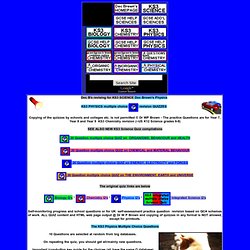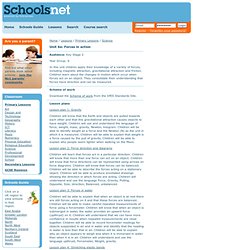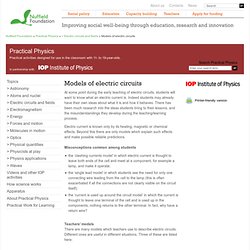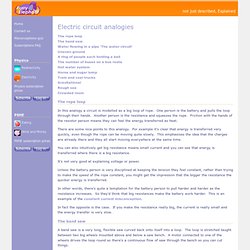

KS3 PHYSICS Quizzes Practice Questions revision notes multiple choice quiz exercises. Doc B's revising for KS3 SCIENCE Doc Brown's Physics KS3 PHYSICS multiple choice revision QUIZZES Copying of the quizzes by schools and colleges etc. is not permitted © Dr WP Brown - The practice Questions are for Year 7, Year 8 and Year 9 KS3 Chemistry revision (~US K12 Science grades 6-8) SEE ALSO NEW KS3 Science Quiz compilations 20 Question multiple choice QUIZ on ORGANISMS, BEHAVIOUR and HEALTH 20 Question multiple choice QUIZ on CHEMICAL and MATERIAL BEHAVIOUR 20 Question multiple choice QUIZ on ENERGY, ELECTRICITY and FORCES 20 Question multiple choice QUIZ on THE ENVIRONMENT, EARTH and UNIVERSE The original quiz links are below Biology Q's * Chemistry Q's * Physics Q's * Integrated Science Q's Self-monitoring progress and school questions or for UK self-assessment practice question revision based on QCA schemes of work.

The KS3 Physics Multiple Choice Questions 10 Questions are selected at random from big databases. On repeating the quiz, you should get all/mainly new questions. ! Electric circuits Yr 7 - from teachers. Electric circuits some of the key words What F is an electrical safety device?. What V is always connected to a circuit in parallel?. What E is the particle with a negative charge which flows around a circuit?. What I is something that wont let electricity pass through it?.
What M is the type of material which are always good conductors?. Solar System (7L) Seasons, Phases and Eclipses (KS3) : Schools. Science lesson plans: Unit 6e: Forces in action lesson plans: Key stage 1 & 2 lesson plans: Primary school lessons: Schoolsnet. Home / Lessons / Primary Lessons / Science Unit 6e: Forces in action Audience: Key Stage 2 Year Group: 6 In this unit children apply their knowledge of a variety of forces, including magnetic attraction, gravitational attraction and friction.

Children learn about the changes in motion which occur when forces act on an object. Scheme of work Download the Scheme of work from the DfES Standards Site. Lesson plans Lesson plan 1: Gravity Children will know that the Earth and objects are pulled towards each other and that this gravitational attraction causes objects to have weight. Lesson plan 2: Force direction and diagrams Children will learn that forces act in a particular direction. Lesson plan 3: Forces in water Children will be able to explain that when an object is at rest there are still forces acting on it and that these forces are balanced.
Lesson plan 4: Stretching elastic bands Children will know that how much an elastic band stretches depends on the force acting on it. Worksheets Websites. Models of electric circuits. At some point during the early teaching of electric circuits, students will want to know what an electric current is.

Indeed students may already have their own ideas about what it is and how it behaves. There has been much research into the ideas students bring to their lessons, and the misunderstandings they develop during the teaching/learning process. Electric current is known only by its heating, magnetic or chemical effects. Beyond this there are only models which explain such effects and make possible reliable predictions. Misconceptions common among students Teachers' models There are many models which teachers use to describe electric circuits. When discussing the water circuit as a model for an electric circuit, you could say to students: ‘There is something the same all the way round the circuit, the same reading with a simple ammeter, or the same brightness of a series of lamps. Electric circuit analogies - current models, stories and visualizations. The rope loopThe band sawWater flowing in a pipe 'The water circuit'Uneven groundA ring of people each holding a ballThe number of buses on a bus routeHot water systemHorse and sugar lumpTrain and coal trucksGravitationalRough seaCrowded room The rope loop In this analogy a circuit is modelled as a big loop of rope.

One person is the battery and pulls the loop through their hands. Another person is the resistance and squeezes the rope. Friction with the hands of the resistor person means they can feel the energy transferred as heat. There are some nice points to this analogy. You can also intuitively get big resistance means small current and you can see that energy is transferred where there is a big resistance. It's not very good at explaining voltage or power. In other words, there's quite a temptation for the battery person to pull harder and harder as the resistance increases. In fact the opposite is the case. The band saw This is a very similar analogy to the rope-loop. Uneven ground.